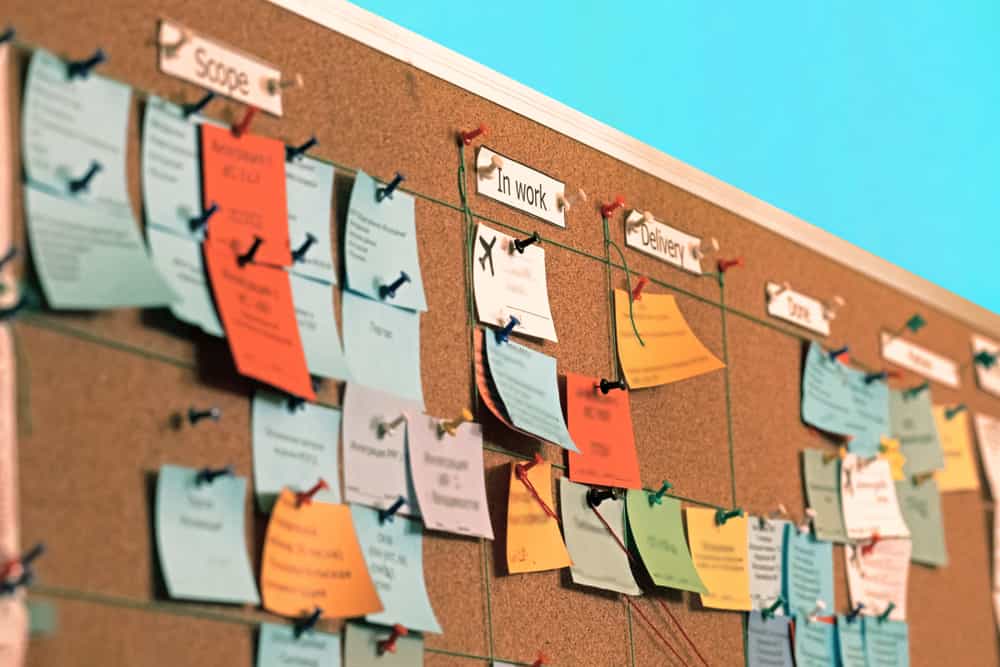What is a product backlog in Scrum?
According to the Scrum Institute, the Scrum Product Backlog is simply a list of all things that need to be done within the project. Sounds simple enough, but in reality, there are a number of factors to consider when you create this backlog if you want to make it useful.
How do you arrange a backlog in Scrum?
Looking for a process to follow to help you establish a useful scrum product backlog? Use these simple steps.
Add ideas
Clarify
Prioritize
Update regularly
How do you maintain a product backlog?
Managing your backlogs in one place makes it easy to work effectively and quickly to communicate with stakeholders. This is where web-based software tools come in handy. You can use them for intake, prioritizing, estimating, and even moving backlog items around.
How do you prioritize backlog items?
To prioritize backlog items follow these three steps:
Step one: Create a prioritization matrix with four quadrants for the product backlog.
Step two: label the x-axis as customer value and the y-axis as resources and difficulty to develop the feature. Label the axes with low at one end and high on the other.
Step three: Take all features from the four quadrants and put them in the list in priority order
Who owns the product backlog?
Product Owners own the product backlog. They decide which items go into the backlog, which ensures each item has value. This means the product owner should write all the item and order them. That said, the product owner should also ensure they aren’t the only one with visibility into the backlog. They need to make the backlog available to both the stakeholders and the scrum team to ensure that everyone is on the same page.
What is the difference between product backlog and sprint backlog?
Product backlogs and sprint backlogs are both essential aspects of product development but they aren’t interchangeable.
The sprint backlog is a list of items that aren’t assigned to a particular developer but are scheduled to be complete by the end of the sprint. This may either be assigned at a later date if planning for a future sprint or act as a task list for anyone on your team who completes their tickets early.
The product backlog is a constant reminder of what’s on the priority list. A sprint backlog cannot be created if a product backlog does not exist, but a product backlog can independently exist without a sprint backlog.
There are a lot of opinions about which organizational processes should be used to manage software development. They can depend on the previous experience of the team, whether or not to try something new, or if current processes need to be tightened up. The most commonly used project management philosophy in the technology space is Agile/Scrum or some derivative therein.
All opinions aside, when you’re using the Scrum framework, there are specific things you can implement to set yourself up for success and having a Scrum Product Backlog is one of them. In this post, we’ll tell you everything you need to know about these backlogs and how you can maintain them for your software development project.
What is a product backlog in Scrum?
According to the Scrum Institute, the Scrum Product Backlog is simply a list of all things that need to be done within the project. Sounds simple enough, but in reality, there are a number of factors to consider when you create this backlog if you want to make it useful.
The list should be prioritized for the development team and built based on a roadmap and the requirements of the roadmap. The most important product backlog items are shown at the top so the development team knows what to deliver first.
The development team doesn’t work through the backlog at the same rate in which the product owner adds to it. In turn, the product owner doesn’t push work to the development team. Instead, the development team takes work from the backlog as there is capacity for it.
A well-thought-out product backlog not only makes planning and executing work easier but also provides transparency into what your team is spending time on. This includes work that may not be immediately obvious to customers or stakeholders, and it can help you set expectations when additional work comes your way.
How do you arrange a backlog in Scrum?
Maintaining a backlog in scrum requires you to be clear on what the business needs and priorities are. Once you understand that, you can arrange the items in order of importance. However, there is an understanding that these priorities may change at any time, much like other aspects of agile development.
How do you start a product backlog?
Looking for a process to follow to help you establish a useful scrum product backlog? Use these simple steps.
- 1. Add ideas
Ideas for improvements or changes may come from many different sources including stakeholders and customers
- 2. Clarify
Once you have an idea or multiple ideas, make sure you understand:
- What the reasons are for the fix or addition
- The amount of value the fix or addition contributes
- The specifications
- 3. Prioritize
The backlog should have clear, high-priority items at the top and items that are not a priority at the bottom. If an item doesn’t add value to the business or the customer, it shouldn’t be in the backlog.
- 4. Update regularly
Make sure you’re constantly refining, prioritizing, and keeping the backlog updated.
There may be hundreds of ideas in your backlog. You may find that over time that you discard some ideas, or that new ones come to light.
How do you maintain a product backlog?
Backlogs are great for helping product managers stay organized. Product backlogs provide a structure for continuously evaluating, prioritizing, and committing to developing the items. However, maintaining them can be challenging. Backlogs can quickly become outdated because they’re not connected to the software the development team uses to manage their work.
Managing your backlogs in one place makes it easy to work effectively and quickly to communicate with stakeholders. This is where web-based software tools come in handy. You can use them for intake, prioritizing, estimating, and even moving backlog items around.
How do you prioritize backlog items?
To prioritize backlog items follow these three steps:
Step one:
Create a prioritization matrix with four quadrants for the product backlog.
Step two:
label the x-axis as customer value and the y-axis as resources and difficulty to develop the feature. Label the axes with low at one end and high on the other.
Step three:
Take all features from the four quadrants and put them in the list in priority order:
- The quadrant that is labeled low cost to develop and high value go first
- The next on the list is the quadrant with high cost, high value
- Third on the list is the low cost, low-value quadrant
- And last but not least, if there are any features in the low cost and low-value quadrant that need to be matched for competitive parity or any other reasons add them to the list
Who owns the product backlog?
Product Owners own the product backlog. They decide which items go into the backlog, which ensures each item has value. This means the product owner should write all the item and order them. Remember our earlier point about the backlog needing to be clear on what the business needs and priorities are and Product Owners are well positioned to interpret business needs.
That said, the product owner should also ensure they aren’t the only one with visibility into the backlog. They need to make the backlog available to both the stakeholders and the scrum team to ensure that everyone is on the same page.
What is the difference between product backlog and sprint backlog?
Product backlogs and sprint backlogs are both essential aspects of product development but they aren’t interchangeable.
- The sprint backlog is a list of items that aren’t assigned to a particular developer but are scheduled to be complete by the end of the sprint. This may either be assigned at a later date if planning for a future sprint or act as a task list for anyone on your team who completes their tickets early.
- The product backlog is a constant reminder of what’s on the priority list. A sprint backlog cannot be created if a product backlog does not exist, but a product backlog can independently exist without a sprint backlog.
There is also a common mistake of confusing a user story with a PBI. The difference is that when PBIs become a higher priority in the product backlog, they are broken down into user stories. This is very common as backlogs get larger and agile teams need to organize the items in the backlog.
Ready to choose a software outsourcing company?
Working through the Agile process doesn’t need to be a chore. With the right support and expertise, you can adapt to change and outpace evolving demands.
We can help.
Unosquare is a trusted partner for these projects. Using our proven Distributed Agile Framework, our software development engineers provide the kind of external perspective, agility, and understanding required for real innovation.
When you partner with Unosquare, you’ll have access to highly skilled software development professionals, Business Analysts, SCRUM Masters, Quality Assurance Engineers, and all the ancillary roles for the delivery of your strategy. Each of us at Unosquare is directly accessible to your project stakeholders. We also live and work in your time zone, and have the support and training from one of the best global software development companies in the world. To learn more about what we can do for your organization, check out our blog.

